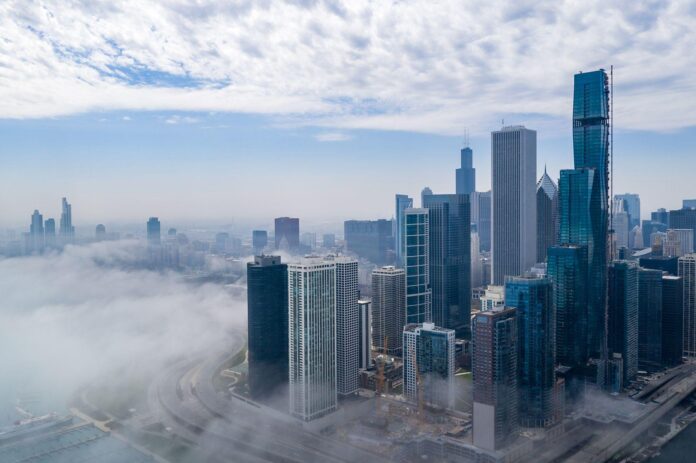As Chicago’s gallery scene grows, an increasing number of the city’s dealers are looking to expand. But rather than open outposts in the US’s coastal art world capitals of New York and Los Angeles, these dealers are looking further afield.
Leading the charge is Mariane Ibrahim, who moved her eponymous gallery from Seattle to Chicago in 2019. Since then, she has opened two international outposts: the first in Paris in 2021 and the second in Mexico City in February. The art scene in the French capital has benefited significantly from Brexit: while the UK’s share of the global art market shrank by 3% from 2020 to 2021, art scales in France increased 50% year-on-year, according to The Art Market 2022, published by Art Basel and UBS. Several blue-chip galleries have opened spaces in Paris in recent years and Art Basel launched a new fair there last autumn. For Ibrahim, the city’s appeal pre-dates the current market trend: “As a French citizen, it was only a matter of time before I would open a space in my country.”
A burgeoning scene south of the border
Meanwhile, Mexico City’s art-world profile has been on the rise due in no small part to the increasing popularity of its flagship art fair, Zona Maco, as well as an overarching tourism boom over the past few years marked especially by an influx of other North Americans. Though the Mexican art market remains dominated by just a few major collectors, dealers in Latin America reported a 29% increase in sales last year, especially in Brazil and Mexico, according to The Art Market 2022.
Emanuel Aguilar, who co-founded Chicago’s Patron gallery with Julia Fischbach, says they are also scouting spaces in Mexico outside the capital that can be used as both an exhibition and residency space for artists and curators alike. “We want to find a way to collaborate with and support artisans and producers [in Mexico] as well as our own,” says Aguilar, who is Mexican American, while also developing long-lasting and “conscientious relationships” with the place and its people in a way that simply participating in fairs cannot offer.
Ibrahim agrees, noting that Chicago and Mexico City, although very different, share a similar sense of pride and investment in their artist communities. She found Mexico City to be an easy fit for her programme, which foregrounds artists of the African diaspora across the Americas and Europe. “Opening a space here will allow us to better connect with the Hispanic and Afro-Latino community,” she says.

The interior of Mariane Ibrahami’s Mexico City space Courtesy Mariane Ibrahim
Chicago’s art market has remained a stable if regional one for half a century, thanks in large part to stalwart dealers like Rhona Hoffman, Kavi Gupta and Richard Grey. Grey was the first to launch a second space outside Chicago—the gallery has maintained a location in New York City since 1997. Gupta also opened an additional space three years ago in New Buffalo, Michigan—a Midwestern version of New York’s Hamptons.
In the past five years, however, Chicago’s gallery scene has seen an infusion of old and new galleries with rigorous and ambitious exhibition programmes coalescing between Wicker Park and the West Loop. This pocket of growth has attracted international curators, collectors and artists “who pay close attention to what is happening here”, according to Aron Gent and Sibylle Friche of Document gallery, which opened as a small exhibiton space and print shop in 2012. In January, they launched a new location in Lisbon, Portugal.

Document’s space in Lisbon Courtesy Document
Like Mexico, Portugal’s international allure—and national revenue—has recently been propelled by tax incentives for foreigners, among them the offer of temporary resident or “digital nomad” visas that allow high-earning visitors long-stay opportunities to work remotely at a reduced tax rate. In both countries, this influx of foreign money has proved a double-edged sword, fuelling a cost-of-living crisis for locals on the one hand while also breathing new life into the creative economy.
“It wasn’t a priority of ours to open a second location, but I visited Lisbon during the Arco art fair and noticed the gallery community there has a similar feeling to Chicago; people seem to have a collegial relationship and strong local artist networks,” Gent says, adding that many galleries and artists there were excited by Chicago’s art scene and opportunities for collaboration.
With so much of the rest of the art world coming to Chicago annually for Expo Chicago, the city’s dealers do not feel pressured to expand to traditional art centres like New York or London in order to achieve a global reach. “Many other cities are disrupting the monopolistic concept of an ‘art-world centre’,” Ibrahim says, and Chicago may increasingly be one of them.

























